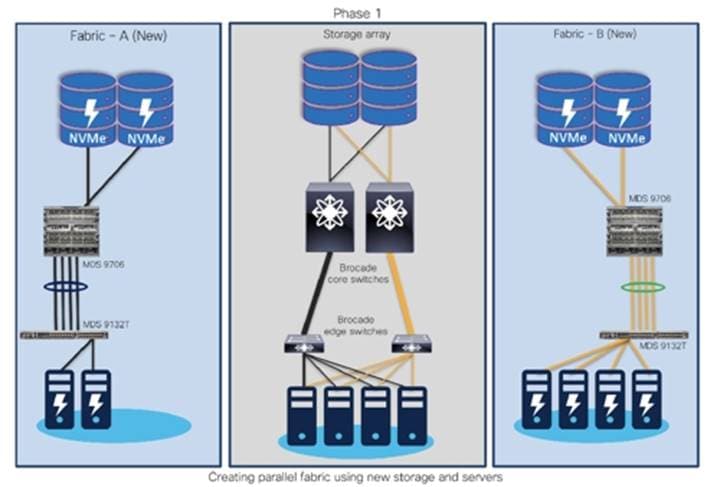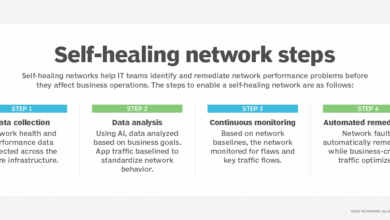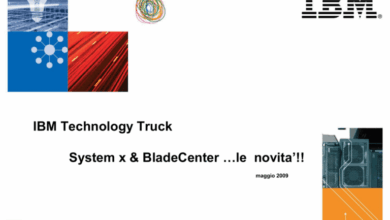Cisco IBM SAN Switches A Powerful Partnership
Cisco IBM collaborate on SAN switches, forging a potent alliance that promises to reshape the data center landscape. This collaboration leverages Cisco’s renowned networking expertise and IBM’s robust cloud computing prowess, combining strengths to create innovative SAN solutions. The current SAN switch market is fiercely competitive, with established players and emerging trends shaping the future. This partnership aims to address existing market gaps and provide significant benefits for businesses seeking cutting-edge technology.
The table below highlights a comparative analysis of Cisco and IBM’s current SAN switch portfolios, exploring key features like performance, scalability, and security. This comparison reveals potential synergies and underscores the benefits of this collaborative effort. The discussion also explores potential technical integrations between Cisco and IBM SAN switch technologies, analyzing their impact on data center architecture and management.
Addressing potential interoperability challenges is crucial, and the partnership needs to demonstrate how it fills existing market gaps.
Introduction to Cisco and IBM Collaboration
Cisco and IBM, titans in the networking and cloud computing landscapes, are joining forces. This collaboration, particularly focused on SAN switches, signifies a potential paradigm shift in the data storage infrastructure market. Cisco’s expertise in networking hardware and IBM’s strength in enterprise software and data management promise significant advancements in storage solutions, offering a compelling proposition for businesses seeking enhanced performance, security, and scalability.This strategic partnership between two industry giants suggests a commitment to developing innovative solutions for complex data storage challenges.
By combining their respective strengths, Cisco and IBM aim to create a more comprehensive and powerful SAN switch ecosystem, addressing the growing demands of modern data centers.
Cisco and IBM’s Networking and Cloud Computing Strengths
Cisco excels in networking infrastructure, encompassing routers, switches, and wireless technologies. Their vast experience in high-performance networking translates directly into a robust SAN switch portfolio, capable of handling significant data volumes. IBM, on the other hand, possesses a comprehensive cloud computing platform, along with deep expertise in enterprise software and data management solutions. Their combination of software and hardware expertise promises an integrated and streamlined approach to data storage and management.
Potential Synergy and Benefits of Collaboration
The collaboration between Cisco and IBM on SAN switches could yield significant benefits for businesses. A combined solution could leverage Cisco’s network optimization prowess with IBM’s data management expertise to deliver higher throughput, lower latency, and enhanced security. This synergy would streamline data access and storage, resulting in a more efficient and reliable data center infrastructure. The unified platform would likely feature optimized protocols and tools, further enhancing the usability and manageability of the system.
Market Landscape for SAN Switches
The SAN switch market is currently dominated by established players like Cisco, IBM, and several niche vendors. Recent trends highlight the increasing demand for high-speed, scalable, and secure SAN solutions, driven by the ever-growing volume and complexity of data being generated and stored. Cloud computing and the need for faster data retrieval are key factors fueling this trend.
Competitors in this space often offer specialized solutions for particular use cases, from specific industry requirements to tailored security protocols.
Comparison of Cisco and IBM SAN Switch Portfolios
| Feature | Cisco | IBM | Other |
|---|---|---|---|
| Performance | Known for high bandwidth and low latency, optimized for high-volume data transfers. | Robust performance, tailored for specific enterprise workloads. May vary depending on specific models. | Specialized vendors may excel in particular performance areas (e.g., specific protocols, or niche applications). |
| Scalability | Flexible architecture supporting large-scale deployments and expansion capabilities. | Scalability depends on the specific model and configuration, often adaptable to varying infrastructure requirements. | Some niche vendors may offer highly specialized scalability features, often at a premium. |
| Security | Comprehensive security features, including encryption and access controls, aligned with industry best practices. | Features robust security protocols and encryption options, meeting enterprise security standards. | Specialized security solutions may cater to specific industry or compliance requirements. |
Technical Aspects of the Collaboration
Cisco and IBM’s collaboration on SAN switches presents a compelling opportunity to leverage the strengths of both companies and potentially revolutionize data center infrastructure. This joint effort promises to deliver enhanced performance, improved manageability, and a more integrated approach to storage networking. The combined expertise of Cisco’s networking prowess and IBM’s deep understanding of storage solutions could create a truly powerful synergy.This collaboration will significantly impact the architecture and management of data centers.
By integrating their respective technologies, the companies aim to reduce complexity and streamline operations. This streamlined approach could improve efficiency, reduce operational costs, and ultimately enhance the overall performance of data center environments. Moreover, this integration promises to foster innovation in areas such as automation, analytics, and security within the storage networking domain.
Potential Technical Integrations
The technical integration of Cisco and IBM SAN switch technologies could involve several key areas. These include standardizing protocols for seamless communication between the two platforms, optimizing the flow of data across heterogeneous networks, and potentially developing unified management interfaces. This unified approach could significantly reduce the complexity of managing storage networks, enabling a more streamlined and automated approach to operations.
This standardization could also unlock a wider range of interoperable solutions and support a more unified infrastructure.
Impact on Data Center Architecture, Cisco ibm collaborate on san switches
The integration of Cisco and IBM SAN technologies will reshape data center architectures. A potential outcome is the emergence of more flexible and scalable architectures, enabling easier adaptation to changing workloads and business requirements. This evolution could result in a more modular approach to data center design, making it easier to add or remove components as needed. The simplified management and streamlined operations will contribute to significant cost reductions in the long run.
Cisco and IBM’s collaboration on SAN switches is interesting, especially considering the recent security measures being implemented by companies like Symantec. For instance, Symantec’s move to require product activation, as detailed in symantec moves against piracy with product activation requirements , highlights the growing need for robust authentication and security in the tech world. This trend likely influences Cisco and IBM’s efforts to ensure the security and integrity of their SAN switch solutions.
Interoperability Challenges and Solutions
Potential interoperability challenges will undoubtedly arise during the integration process. These include differences in protocols, management interfaces, and data models between the two companies’ existing systems. However, these issues can be addressed by adopting standardized protocols and developing common APIs for seamless communication. Thorough testing and validation across different environments will also be crucial for ensuring compatibility and resolving potential issues early on.
Moreover, dedicated technical teams focused on resolving these issues proactively are essential.
Addressing Market Gaps
The collaboration addresses several market gaps. One critical gap is the lack of a unified platform for managing and monitoring storage networks across diverse technologies. By combining Cisco and IBM’s expertise, this collaboration aims to fill this gap by providing a more holistic approach to storage networking. Another area of focus is improving the performance and security of storage networks in large, complex environments.
This integration has the potential to deliver enhanced performance and resilience. The integration could also reduce the cost and complexity of deploying and managing such systems.
Conceptual Diagram of a Cisco-IBM SAN Solution
[Note: A diagram is not included here, but a conceptual diagram could illustrate a hybrid SAN architecture. It would depict a Cisco network fabric interconnecting with IBM storage arrays, potentially using a common management platform. The diagram could also highlight the flow of data and the interaction points between the two technologies. The diagram would include elements like Cisco switches, IBM storage arrays, network connections, and the unified management interface.]
Cisco and IBM collaborating on SAN switches is interesting, but given the increasing sophistication of cyberattacks, like those highlighted by Symantec in their report on symantec more computer attacks use blended tactics , it’s crucial to consider the security implications. Robust security measures need to be built into these new SAN switch designs to withstand these evolving threats, and the collaboration could potentially lead to more secure infrastructure solutions.
Market Implications and Opportunities: Cisco Ibm Collaborate On San Switches
The collaboration between Cisco and IBM on SAN switches presents a compelling opportunity to reshape the storage networking landscape. This joint effort promises to leverage the strengths of both companies, offering a potent combination of networking prowess and enterprise-grade storage solutions. The potential benefits extend beyond mere product enhancements, encompassing new market segments, competitive advantages, and innovative revenue models.
Potential Market Segments
This collaboration stands to benefit several key market segments. First, large enterprise customers seeking high-performance, scalable, and reliable storage solutions will find this offering attractive. Secondly, data centers requiring enhanced security and management capabilities will likely be drawn to the integrated approach. Thirdly, organizations undergoing digital transformation, demanding rapid data access and processing, will find this joint solution a valuable asset.
Finally, hyperscale cloud providers needing efficient and robust SAN infrastructures will find a compelling solution in this partnership.
Competitive Advantages
The combined strength of Cisco’s networking expertise and IBM’s storage prowess creates a compelling competitive advantage. Cisco’s global reach and extensive network of partners will ensure wider market penetration. IBM’s deep industry knowledge and robust enterprise customer base will provide crucial market insights and accelerate adoption. The integration of both companies’ strengths, coupled with their complementary product lines, will provide a unified solution surpassing the capabilities of standalone offerings.
This unified approach will enhance the overall value proposition, potentially attracting customers currently using competing solutions.
Revenue Streams and Business Models
The collaboration opens up diverse revenue streams. One key area is licensing and maintenance of the combined SAN solution. Another potential revenue stream is through the sale of complementary products and services, such as specialized hardware, software, and support packages. The development of managed services around this integrated SAN solution could also be a substantial revenue generator, offering customers an all-encompassing service package.
Influence on the Future of SAN Technology
This collaboration has the potential to fundamentally alter the future of SAN technology. By integrating networking and storage capabilities, the partnership will likely set new standards for performance, security, and management. This integrated approach may encourage further consolidation of networking and storage functions, driving innovation and optimization in data center architectures.
Comparison with Existing Solutions
Existing SAN solutions often fall short in integrating networking and storage functionalities, leading to performance bottlenecks and complex management. Cisco and IBM’s combined approach addresses these shortcomings by providing a streamlined and integrated platform. The proposed collaboration simplifies deployment and management, improves scalability, and offers enhanced security compared to existing, often fragmented, solutions. Existing vendor solutions, while competent in their respective domains, often lack the holistic approach offered by the Cisco-IBM collaboration.
This combined effort offers an advantage by streamlining operations, minimizing management complexities, and maximizing performance.
Potential Use Cases and Benefits
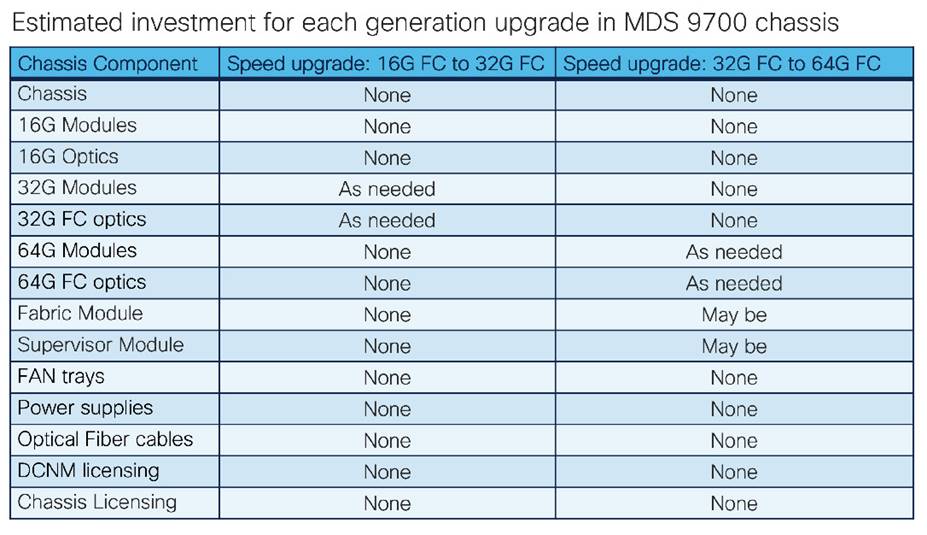
The collaboration between Cisco and IBM on storage area network (SAN) solutions promises exciting possibilities for customers seeking enhanced data center performance, simplified management, and cost-effective solutions. This synergy leverages the strengths of both companies, creating a compelling offering that addresses critical pain points across various industries. The resulting integration offers opportunities for streamlined data management and improved operational efficiency.
Potential Use Cases
This section Artikels potential use cases for a combined Cisco-IBM SAN solution, showcasing the advantages for various industries. These use cases highlight the versatility of the combined technology, providing a broad spectrum of potential applications.
- Data Center Consolidation: Combining Cisco and IBM SAN technologies allows for the consolidation of disparate storage systems into a unified, high-performance platform. This consolidation streamlines management, reduces operational overhead, and increases overall efficiency. For example, a financial institution migrating from multiple legacy systems to a consolidated Cisco-IBM SAN solution can achieve significant savings in both hardware and personnel costs.
Cisco and IBM’s collaboration on SAN switches is interesting, especially considering the parallel developments in online search. Just like how companies are constantly innovating to improve storage solutions, companies like Google and Overture are also vying for revenue streams from local search results, as detailed in this article on google and overture hunt for local results revenue.
Ultimately, these advancements in both areas show a larger trend of competition and innovation in the tech sector, driving improvements in both storage and search technologies.
- High-Performance Computing (HPC): This combined solution excels in providing the high-bandwidth and low-latency necessary for demanding HPC workloads. The integration can be crucial for scientific research, financial modeling, and other applications requiring significant processing power. A research lab conducting simulations for complex engineering designs, for instance, can benefit from the speed and reliability of a Cisco-IBM SAN solution, enabling faster processing times and more accurate results.
- Cloud-Native Applications: Modern applications increasingly rely on cloud-based infrastructure. A Cisco-IBM SAN solution can seamlessly integrate with cloud platforms, enabling smooth data migration and consistent performance. A company deploying a new cloud-native application for customer service, for instance, can benefit from a single, unified storage solution that efficiently manages data across on-premises and cloud environments.
- Disaster Recovery and Business Continuity: Implementing a robust disaster recovery strategy is crucial for any organization. A combined Cisco-IBM SAN solution can simplify the process of setting up geographically dispersed storage facilities and ensuring data redundancy. A large e-commerce company, for instance, can leverage a Cisco-IBM SAN solution to replicate data in multiple locations, minimizing downtime in the event of a disaster.
Benefits for Customers
This section details the tangible advantages of the combined Cisco-IBM SAN solution for customers. These benefits address key concerns and provide significant value propositions.
- Cost Savings: The consolidated platform and optimized resource utilization can lead to substantial cost savings in hardware, software, and personnel. Simplified management tasks and reduced operational overhead contribute to a lower total cost of ownership (TCO).
- Performance Improvements: The synergy between Cisco and IBM technologies results in a more robust and responsive SAN infrastructure. This improvement in performance directly impacts application responsiveness and overall productivity.
- Simplified Management: The integrated solution offers a streamlined management interface, reducing the complexity and time required for administration. Centralized management tools and automation features improve operational efficiency.
Potential Customer Pain Points Addressed
The combined solution directly addresses key pain points for organizations looking for efficient SAN solutions.
- Legacy System Integration Challenges: The integration of existing heterogeneous storage systems is a significant hurdle for many organizations. The Cisco-IBM SAN solution helps overcome this by offering a unified platform for various storage types.
- High Costs of Data Center Consolidation: Consolidating data centers is often expensive. The proposed solution helps reduce costs by providing a consolidated, optimized platform for managing data.
- Complex SAN Management: Managing SAN infrastructures can be challenging. The proposed solution provides simplified management tools and automation features.
Use Case Specific Benefits and Pain Points
This table illustrates the specific benefits and pain points addressed for each use case.
| Use Case | Benefits | Pain Points Addressed |
|---|---|---|
| Data Center Consolidation | Reduced hardware costs, simplified management, increased efficiency, improved performance | Multiple, disparate storage systems, complex integration, high operational overhead |
| High-Performance Computing | High bandwidth, low latency, optimized storage for demanding workloads, increased processing speed | Slow processing times, limited storage capacity, insufficient bandwidth for complex simulations |
Security and Compliance Considerations
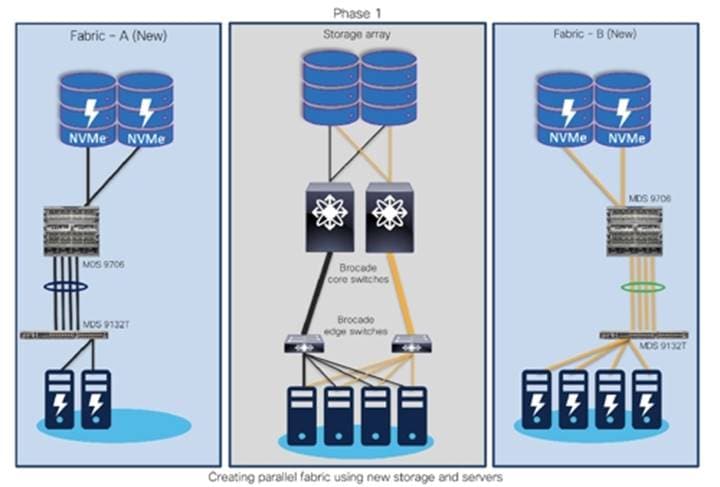
Integrating Cisco and IBM SAN switch technologies presents exciting opportunities, but also necessitates careful consideration of security and compliance implications. The combined solution, while offering enhanced performance and features, requires a proactive approach to mitigate potential vulnerabilities and ensure adherence to industry regulations. A thorough understanding of security protocols, potential risks, and compliance requirements is crucial for successful deployment.
Security Implications of Integration
The integration of Cisco and IBM SAN switch technologies necessitates a comprehensive security assessment. This includes examining the potential for vulnerabilities in the combined architecture, assessing the impact of any security flaws on data integrity and confidentiality, and identifying potential attack vectors. A risk-based approach, prioritizing vulnerabilities based on their potential impact, is critical for effective security management.
Security Protocols and Supported Features
The combined solution leverages a robust set of security protocols and features. These include, but are not limited to, encryption protocols for data transmission, access controls for user authentication, and intrusion detection systems for threat monitoring. Detailed documentation on these protocols and features should be available for thorough review. Understanding these features is crucial to establishing secure configurations and effective security policies.
Compliance Considerations for Various Industries
Compliance with industry-specific regulations is paramount. For example, healthcare organizations must adhere to HIPAA regulations, financial institutions to PCI DSS, and government agencies to FISMA. The combined Cisco and IBM SAN switch solution should be designed to accommodate and support these regulations. This requires meticulous planning and consideration of the specific requirements of each industry.
Potential for Enhanced Security
The collaboration between Cisco and IBM, by leveraging their respective strengths in network and storage security, has the potential to offer a more comprehensive and robust security architecture. This could involve improved data encryption, enhanced access controls, and advanced threat detection mechanisms, potentially leading to a more secure and reliable infrastructure.
Potential Security Vulnerabilities and Mitigation Strategies
While the combined solution offers numerous security advantages, potential vulnerabilities still exist. These might include misconfigurations of security protocols, inadequate access controls, or insufficient monitoring of network traffic. Mitigation strategies include rigorous configuration management processes, regular security audits, and proactive threat intelligence integration. Furthermore, implementing robust intrusion detection and prevention systems is crucial for early threat detection and response.
Future Trends and Predictions
The Cisco-IBM collaboration on SAN switches promises a fascinating future for storage networking. This partnership, combining Cisco’s networking expertise with IBM’s deep understanding of data storage, is poised to drive significant advancements, impacting everything from data center design to security protocols. The potential for innovation is substantial, and the implications for future collaborations in the tech industry are noteworthy.The convergence of networking and storage technologies, enabled by this collaboration, is expected to lead to a new era of intelligent, automated, and secure storage solutions.
This shift will necessitate a reevaluation of current data center architectures, potentially leading to more streamlined and efficient designs.
Future of SAN Technology
The future of SAN technology is likely to be characterized by greater automation and intelligence. Existing SAN solutions are often complex and require significant manual intervention for management and maintenance. The combined expertise of Cisco and IBM will likely lead to solutions that can automatically optimize performance, proactively identify and resolve potential issues, and dynamically adapt to changing workloads.
This shift toward automation is essential for handling the increasing volume and complexity of data. For example, the ability to predict and prevent storage bottlenecks in real-time will be a significant benefit for organizations managing large datasets.
Innovations Enabled by the Partnership
The collaboration will likely foster innovations in several key areas. This includes advancements in software-defined storage (SDS), which can enhance flexibility and scalability in storage infrastructure. Another area of innovation will likely involve the integration of AI and machine learning into SAN management. This integration will enable more sophisticated analytics and predictive capabilities, enabling faster problem resolution and improved performance.
For instance, AI could analyze data patterns to identify potential storage bottlenecks and automatically adjust resources to prevent failures.
Impact on Future Data Center Designs
The Cisco-IBM collaboration will influence future data center designs by pushing towards more streamlined and automated architectures. The potential for hyper-converged infrastructure (HCI) will increase, combining computing, networking, and storage into a single, integrated system. This will lead to reduced complexity, improved efficiency, and greater agility in deploying and managing resources. The resulting data centers will be more adaptable to the changing needs of modern organizations, particularly those handling high-volume, complex data sets.
Furthermore, the shift towards software-defined networking (SDN) and storage will simplify data center management and provide greater control over network and storage resources.
Potential for Future Collaborations
The Cisco-IBM collaboration on SAN switches opens the door for future partnerships in related technologies. We can expect to see further collaborations on areas like NVMe-over-fabric (NVMe-oF) solutions and storage security protocols. These collaborations will further drive innovation in storage networking and data center design. Further collaboration on areas such as hybrid cloud environments, edge computing solutions, and quantum computing-related infrastructure will likely follow.
Key Takeaways
The Cisco-IBM collaboration on SAN switches has the potential to revolutionize storage networking. The focus on automation, intelligence, and security will drive significant advancements in data center designs and storage solutions. This collaboration promises a future of more efficient, agile, and secure data storage infrastructure, which will be crucial for organizations handling increasingly complex and demanding data workloads.
Last Recap
The Cisco IBM collaboration on SAN switches signifies a significant advancement in data center technology. This partnership promises to deliver innovative solutions, enhancing performance, simplifying management, and addressing key customer pain points across various industries. The potential for cost savings, performance improvements, and streamlined operations is substantial. The future implications for SAN technology and the broader data center landscape are substantial, paving the way for further collaborations and innovations.

